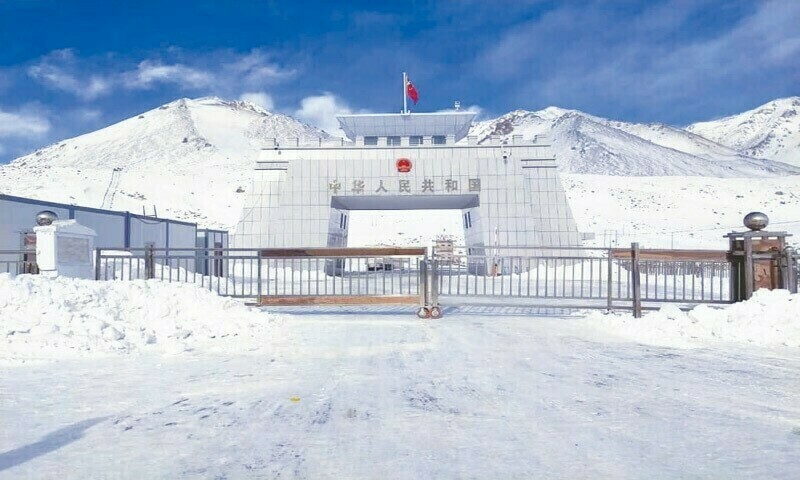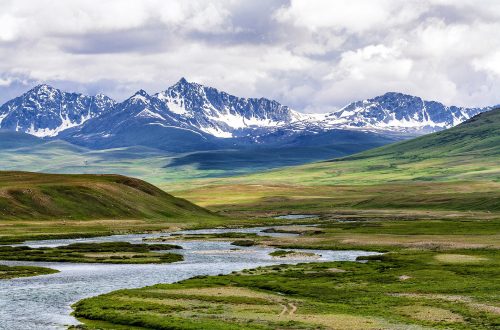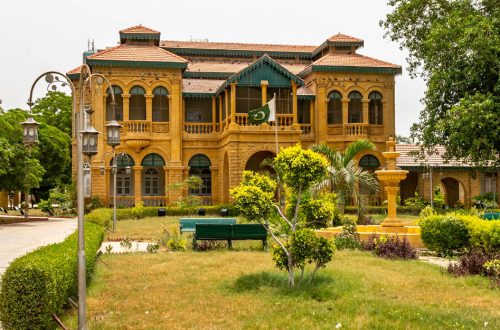Navigating the majestic heights of Khunjerab Pass, the world’s highest international paved road, requires an understanding of its unique climate. Linking Pakistan and China, this mountainous passage not only embodies a significant route for trade but also poses a fascinating challenge for travelers.
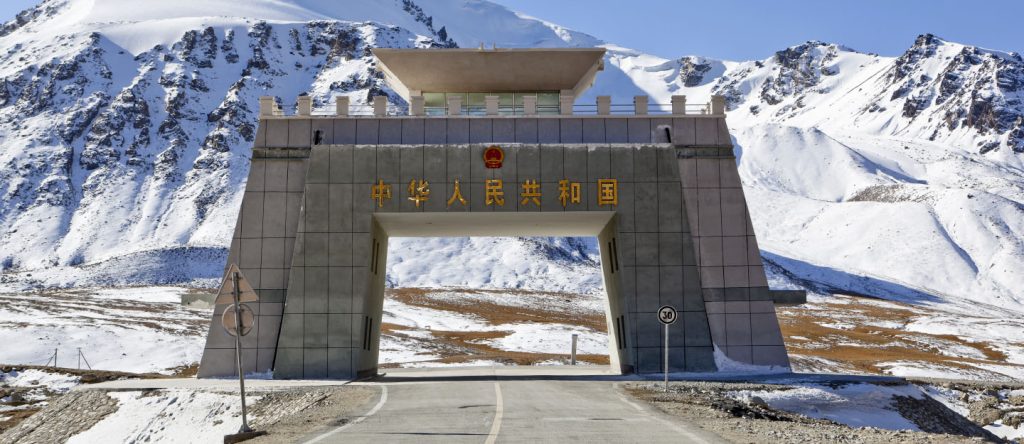
Gateway Between Pakistan and China
Soaring at a staggering 4,733 meters, Khunjerab Pass isn’t just the world’s highest paved international border crossing, it’s a vital link between Pakistan and China. This strategic mountain pass on the Karakoram Highway serves as:
- Trade Corridor: A crucial artery for trade between the two nations. Trucks laden with goods traverse the treacherous terrain, fostering economic exchange by China-Pakistan Economic Corridor .
- Cultural Bridge: While acting as a border, Khunjerab Pass also facilitates cultural exchange. It allows interaction between people from both sides, promoting understanding and connection.
- Adventure Hub: Khunjerab Pass beckons thrill-seekers and nature enthusiasts. The majestic scenery, coupled with the challenge of reaching such a high altitude, attracts adventurers from across the globe.
Key Factors Influencing Khunjerab Pass Climate
Khunjerab Pass, the world’s highest paved border crossing, throws weather curveballs. Here’s why:
- Altitude Matters: Sitting at a staggering 4,733 meters, thin air means heat escapes rapidly, keeping temperatures frigid year-round. Expect nights well below freezing, even in summer.
- Continental Divide: Deep within the Himalayas, Khunjerab experiences dramatic seasonal shifts. Summers are brief and mild with occasional rain, while winters are brutal with heavy snowfall and strong winds.
- Living with Glaciers: Surrounding glaciers constantly cool the region. Meltwater feeds the Shyok River, further influencing humidity.
- Limited Insulation: Sparse vegetation offers little protection, allowing temperatures to swing wildly.

Seasonal Weather Patterns at Khunjerab Pass
Khunjerab Pass, the world’s highest paved border crossing, experiences dramatic shifts in weather throughout the year. Here’s a glimpse of its seasonal variations:
- Summer (June-August): The crown jewel. While still chilly, these months offer the most pleasant weather with average highs reaching 10°C (50°F). Expect occasional rain showers and unpredictable weather changes.
- Autumn (September-November): The curtain falls on summer. Temperatures plummet rapidly, with nights dipping below freezing. Occasional snowfall can occur, making road conditions unpredictable.
- Winter (December-February): Khunjerab transforms into a winter wonderland. Heavy snowfall blankets the landscape, with temperatures averaging a bone-chilling -15°C (5°F). Blizzards and road closures are frequent.
- Spring (March-May): A time of cautious optimism. Temperatures slowly rise, with snow melting and revealing the landscape beneath. However, unpredictable weather patterns and potential snowfall persist.
Understanding the Weather at Khunjerab Pass
Understanding the Weather at Khunjerab Pass: Due to its high altitude (4,733 meters), Khunjerab Pass experiences a cold climate year-round. Expect temperatures below freezing at night, even in summer. Summers are mild with occasional rain, while winters are harsh with snowfall. Check current conditions before visiting, as blizzards and road closures can occur.
Travel Tips for Khunjerab Pass
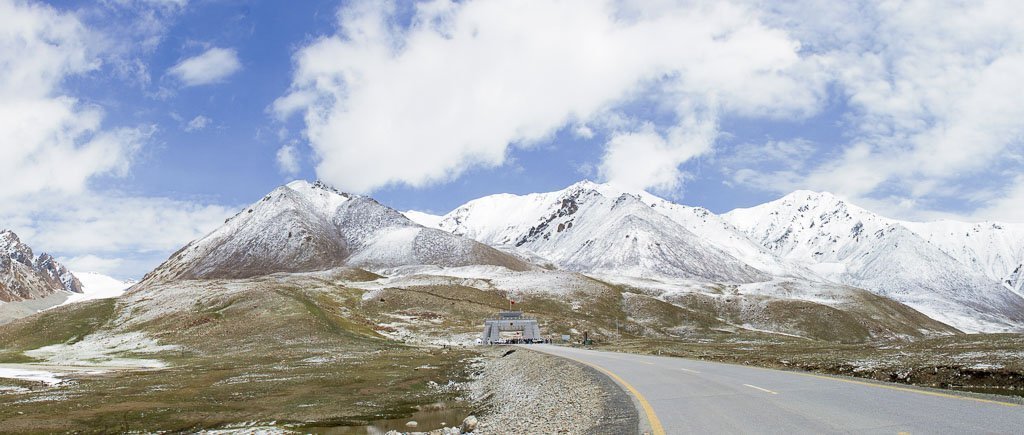
Khunjerab Pass, the “roof of the world,” demands respect. Here are some key tips for a successful trip:
- Embrace the Cold: Pack warm clothes in layers, including a hat, gloves, and a sturdy jacket. Temperatures plummet year-round, even in summer.
- Mind the Altitude: Khunjerab sits at a staggering 4,733 meters. Acclimatize properly to avoid altitude sickness. Drink plenty of fluids and avoid strenuous activity upon arrival.
- Be Weather Savvy: The weather can change rapidly. Check the latest forecast and pack for all conditions, including rain, snow, and strong winds.
- Choose the Right Time: The most comfortable weather is during the short summer window (June-August). However, roads might be closed due to occasional rain or snow. Spring and autumn can be unpredictable. Winters are brutally cold with frequent road closures.
- Plan Your Transportation: Public transport is limited. Consider joining a tour or hiring a 4WD vehicle experienced in navigating the high mountain terrain You can also visit through Attabad Lake Tour.
- Respect the Environment: Khunjerab Pass boasts a fragile ecosystem. Leave no trace, minimize waste, and avoid disturbing the wildlife.
The Role of Weather in Trade Activities
Khunjerab Pass, a crucial trade route, is heavily influenced by weather. Harsh winters with snow and blizzards can disrupt traffic for months, impacting trade between Pakistan and China. Careful planning and monitoring weather forecasts are vital to ensure smooth trade flow through this high-altitude pass.
Historical Weather Events at Khunjerab Pass
Khunjerab Pass, the world’s highest paved border crossing, boasts a history as dramatic as its landscape. Here are some glimpses into past weather events that shaped its legend:
- The Blizzard of ’82: A legendary event that shut down the pass for weeks. Blizzards raged for days, burying the road under meters of snow and leaving stranded travelers in harsh conditions.
- Landslides and Mudslides: Heavy monsoon rains can trigger devastating landslides and mudslides, blocking the narrow mountain pass and causing significant damage to infrastructure.
- Unpredictable Snowfall: Even in summer, sudden snowstorms can blanket the pass, creating treacherous driving conditions and forcing unexpected road closures.
These historical events highlight the unforgiving nature of Khunjerab Pass’s climate. Understanding these past occurrences allows for better preparation and respect for the power of weather at this extreme altitude.
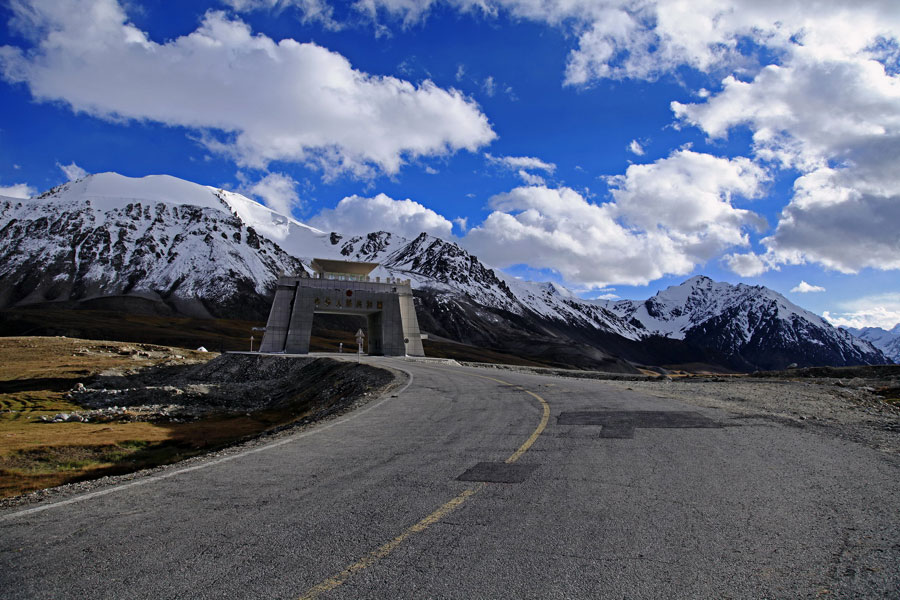
Safety and Navigation Through Khunjerab Pass
Khunjerab Pass, the “roof of the world,” demands respect for its unforgiving terrain and unpredictable weather in region of Pakistan which meet at China’s Xinjiang region. Here’s how to navigate safely:
- Travel with a Guide or Experienced Driver: The treacherous mountain roads require a skilled driver familiar with the conditions. Consider joining a guided tour or hiring a 4WD vehicle with a local driver who understands the nuances of the pass.
- Adhere to Border Regulations: Obtaining the necessary permits for both Pakistan and China is crucial. Entry restrictions may apply, so plan accordingly understanding China’s Belt and Road Initiative.
- Respect Road Closures: Don’t attempt to navigate the pass when closed due to bad weather. Wait for official clearance to ensure your safety.
- Be Prepared for Emergencies: Carry a well-stocked first-aid kit, warm clothing, and emergency supplies, including food and water, in case of unexpected delays.
- Communicate Your Plans: Inform someone about your travel itinerary and estimated arrival time, especially if traveling independently.
- Stay Alert and Focused: The breathtaking scenery can be distracting. Stay focused on the road, maintain a safe speed, and avoid driving under the influence.
By prioritizing safety, following these tips, and respecting the power of nature, you can ensure a memorable and safe journey through the majestic Khunjerab Pass.
Weather-Related Safety Precautions for Travelers
Khunjerab Pass’s unpredictable weather demands caution. Pack for all conditions, including layers for plummeting temperatures, rain gear for sudden showers, and sun protection for clear skies. Always check the latest forecasts and be prepared to adjust plans due to weather changes. Remember, respecting the weather is key to a safe Khunjerab Pass adventure.
How Weather Affects the Karakoram Highway Condition
Khunjerab Pass, a key part of the Karakoram Highway, is heavily impacted by weather. Heavy snowfall and blizzards can block the road for months, hindering travel and trade. Monsoon rains trigger landslides, causing road closures and requiring repairs. Checking current weather forecasts is vital before attempting this high-altitude journey.
Future of Khunjerab Pass
Khunjerab Pass, with its strategic location, holds promise for future development. Advancements in weather forecasting and road maintenance could extend the operational season. Sustainable tourism practices can promote cultural exchange while preserving this fragile environment. The “roof of the world” might become even more accessible in the years to come.
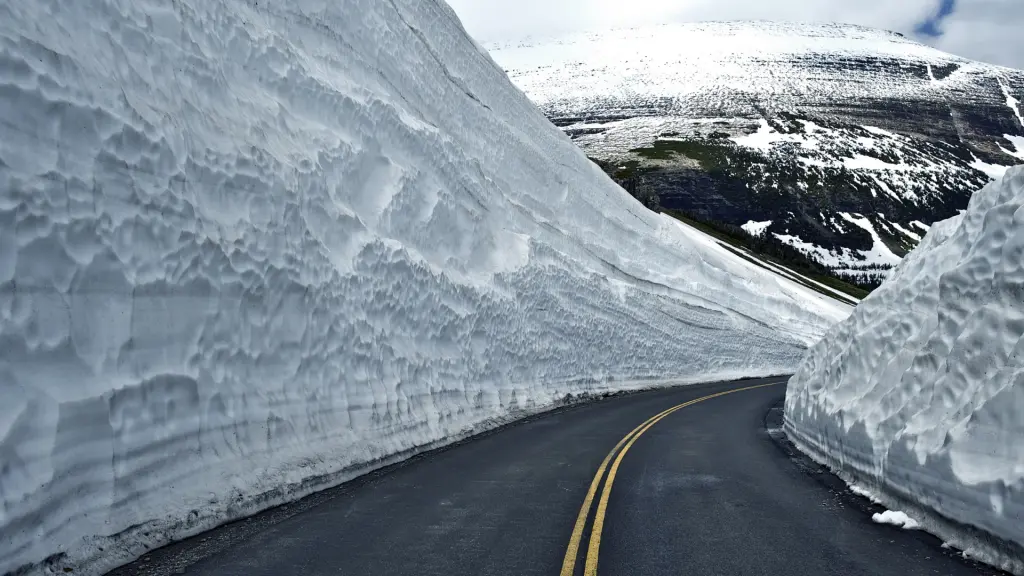
Weather Forecasting and Infrastructure Developments
Khunjerab Pass’s harsh climate throws weather curveballs. However, advancements are aiding in navigating its unpredictable nature.
- Improved Weather Forecasting: Meteorological technology is constantly evolving. More accurate weather monitoring and forecasting systems around the Khunjerab Pass can provide timely warnings of approaching blizzards or sudden snowstorms, allowing for better planning and risk reduction.
- Enhanced Infrastructure: Investing in infrastructure improvements can make Khunjerab Pass more manageable. This could include building sturdier snow shelters along the route, developing avalanche protection systems, and improving road maintenance techniques to handle heavy snowfall and landslides.
By combining advanced weather forecasting with robust infrastructure, the future of Khunjerab Pass looks brighter. These developments can lead to a longer operational season, increased safety for travelers, and a more sustainable passage through this awe-inspiring yet unforgiving mountain pass.
The Impact of Climate Change on Khunjerab Pass
Khunjerab Pass, the world’s highest paved border crossing, is not immune to the effects of climate change. Here’s a look at the potential impacts:
- Melting Glaciers: Rising temperatures threaten the surrounding glaciers, a source of the Shyok River that feeds the region. This could lead to reduced water flow, impacting local ecosystems and potentially affecting road stability.
- Increased Avalanches: A warming climate can lead to more unpredictable snowfall patterns, creating a higher risk of avalanches and landslides, disrupting travel and posing safety hazards.
- Uncertain Future: The overall impact of climate change on Khunjerab Pass’s weather patterns remains uncertain. More extreme weather events, including erratic precipitation and stronger winds, could become a norm.
The future of Khunjerab Pass hinges on our ability to mitigate climate change. Sustainable practices and international cooperation are crucial for preserving this vital trade route and ensuring the safety of those who traverse this magnificent yet fragile mountain pass.
Which 2 passes connect Pakistan with China?
Pakistan and China, two neighboring nations bound by friendship, are divided by the towering Karakoram mountain range, the highest in the world. The sole link bridging these two countries across this formidable expanse of peaks is the Khunjerab Pass, situated at an elevation of 16,200 feet.
Why is Khunjerab Pass famous?
The Khunjerab Pass boasts several remarkable distinctions, such as being the highest paved international border crossing in the world and marking the apex of the Karakoram Highway.
Can I go to China from Khunjerab Pass?
The border operates exclusively from Monday to Friday. On the Chinese side, it opens from 11am to 8pm Beijing time (9am to 6pm unofficial Xinjiang time), while on the Pakistani side, it opens from 9am to 5pm Islamabad time, which is 3 hours behind Beijing time.
Why Khunjerab Pass was closed?
The pass links Gilgit-Baltistan with China’s Xinjiang region and was reopened in April 2023 after being closed for nearly three years. It was shut down in 2020 following the onset of the COVID-19 pandemic.
Does Khunjerab Pass have snow?
The area is extremely cold, with snow-covered peaks visible in every direction. The high altitude makes it challenging to remain at the location for an extended period. Snowfall occurs throughout the year, so it’s advisable to bring warm clothing along.
What is the minimum temperature in Khunjerab?
The temperature at the Khunjerab Pass fluctuates between -25°C and +50°C, making it one of the chilliest passes globally.
